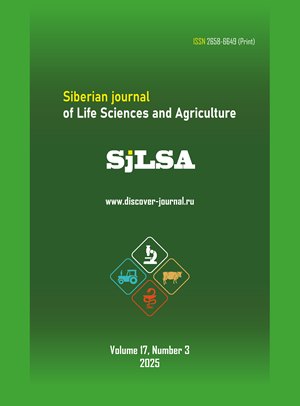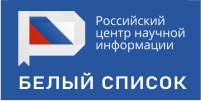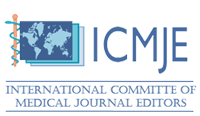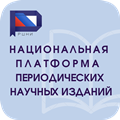Andongan as a strategy for purifying agricultural irrigation water: case study of Subak Sembung, Bali
Аннотация
Farmers in Bali have for centuries applied local wisdom in the concept of andongan to obtain better water quality from Subak irrigation streams. The problem is that the implementation of andongan is starting to be abandoned because farmers do not understand the benefits and functions of andongan. This research aims to analyze the local wisdom in the andongan concept in Subak Sembung, Denpasar-Bali, and identify the plants used in andongan. The target is that the andongan concept can be revitalized so that it can be implemented again by farmers. Moreover, the idea of andongan in terms of its function, purpose, and how it works in principle is the same as phytoremediation technology. The case study method with a qualitative approach was used in this research to collect data through observation, interviews, and documentation. If examined closely, andongan is a water management system that reflects Balinese farmers' respect for water as a source of life. Water is respected as a vital element for producing food and maintaining the sustainability of the agricultural sector. Conceptually, andongan is a water purification innovation using plants commonly referred to as phytoremediation technology. The types of plants commonly used to purify water in andongan are water hyacinth (Eichornia Crassipes) and lotus (Nymphae sp.). The implementation of the Andongan concept in Subak currently faces challenges related to farmers' land ownership status. Tenant farmers who do not have permanent ownership of the land they manage are reluctant to build Andongan because they are worried that this will reduce the size of the planting area and result in a decrease in crop yields. Based on the results of the study, it can be concluded that farmers in Bali have been applying phytoremediation technology for centuries in a water management concept called Andongan. The plants used in andongan also have benefits as animal feed and for religious ceremonies.
EDN: EHKOKP
Скачивания
Литература
Norken, I. N., Suputra, I. K., & Arsana, I. G. N. K. (2015). Aktivitas Aspek Tradisional Religius Pada Irigasi Subak: Studi Kasus Pada Subak Piling, Desa Biaung, Kecamatan Penebel, Kabupaten Tabanan. Universitas Udayana.
Salamanca, A., Nugroho, A., Osbeck, M., Bharwani, S., & Dwisasanti, N. (2015). Managing a living cultural landscape: Bali’s subaks and the UNESCO World Heritage Site. Bangkok.
Doerr, F., & Virk, U. (2014). More than irrigation — The Balinese Subak system as a unique form of cooperative water resource management in Indonesia. Journal of Food, Agriculture & Society, 2, 181-182.
Norken, I. N., Suputra, I., & Arsana, I. G. N. K. (2016). Challenges to the conservation of Subak system as world cultural heritage in Bali. Journal of Agricultural Science and Technology B, 6, 215-225. https://doi.org/10.17265/2161-6264/2016.04.001
Rahmi, D. H., & Setiawan, B. (2020). Pressures on the Balinese world cultural landscape heritage: The case of Jatiluwih Subak Village. IOP Conference Series: Earth and Environmental Science, 501. https://doi.org/10.1088/1755-1315/501/1/012032 EDN: https://elibrary.ru/ryioan
Zen, I. S., Surata, S. P. K., Titisari, P. W., Ab Rahman, S. A., & Zen, S. (2024). Sustaining subak, the Balinese traditional ecological knowledge in the contemporary context of Bali. IOP Conference Series: Earth and Environmental Science, 1306. https://doi.org/10.1088/1755-1315/1306/1/012034
Yekti, M. I., Schultz, B., Norken, I. N., Gany, A. H. A., & Hayde, L. (2017). Learning from experiences of ancient Subak schemes for participatory irrigation system management in Bali. Irrigation and Drainage, 66, 567-576. https://doi.org/10.1002/ird.2122
Sedana, G., Yastini, N. N., & Maulina, N. M. I. (2021). Roles of local farmers’ organization in supporting food security: Case of Subak in Bali, Indonesia. IOP Conference Series: Earth and Environmental Science, 911. https://doi.org/10.1088/1755-1315/911/1/012083 EDN: https://elibrary.ru/oqfton
Resiani, N. M. D., & Sunanjaya, I. W. (2020). The efficiency of water in supporting local wisdom and food sustainability in Subak Sange, Bali, Indonesia. Agromet, 34, 67-74. https://doi.org/10.29244/j.agromet.34.2.67-74 EDN: https://elibrary.ru/shyjwa
Muliarta, I. N., Suanda, I. W., & Suriani, N. L. (2021). Local wisdom of Balinese people managing water in Tirta (holy water) concept. Asian Journal of Applied Research in Community Development and Empowerment, 5, 28-31. https://doi.org/10.29165/ajarcde.v5i3.76 EDN: https://elibrary.ru/udvaqa
Malakar, A., Snow, D. D., & Ray, C. (2019). Irrigation water quality — A contemporary perspective. Water (Switzerland), 11, 1-24. https://doi.org/10.3390/w11071482 EDN: https://elibrary.ru/krrybv
Rengasamy, P. (2018). Irrigation water quality and soil structural stability: A perspective with some new insights. Agronomy, 8, 1-13. https://doi.org/10.3390/agronomy8050072
Allende, A., & Monaghan, J. (2015). Irrigation water quality for leafy crops: A perspective of risks and potential solutions. International Journal of Environmental Research and Public Health, 12, 7457-7477. https://doi.org/10.3390/ijerph120707457
Lothrop, N., Bright, K. R., Sexton, J., Pearce-Walker, J., Reynolds, K. A., & Verhougstraete, M. P. (2018). Optimal strategies for monitoring irrigation water quality. Agricultural Water Management, 199, 86-92. https://doi.org/10.1016/j.agwat.2017.12.018
Bortolini, L., Maucieri, C., & Borin, M. (2018). A tool for the evaluation of irrigation water quality in the arid and semi-arid regions. Agronomy, 8, 1-15. https://doi.org/10.3390/agronomy8020023 EDN: https://elibrary.ru/ygeyux
Gusain, R., Kumar, N., & Ray, S. S. (2020). Recent advances in carbon nanomaterial-based adsorbents for water purification. Coordination Chemistry Reviews, 405, 213111. https://doi.org/10.1016/j.ccr.2019.213111 EDN: https://elibrary.ru/utkkxp
Bolisetty, S., Peydayesh, M., & Mezzenga, R. (2019). Sustainable technologies for water purification from heavy metals: Review and analysis. Chemical Society Reviews, 48, 463-487. https://doi.org/10.1039/c8cs00493e
Abas, A., Aziz, A., & Awang, A. (2022). A systematic review on the local wisdom of indigenous people in nature conservation. Sustainability, 14, 3415. https://doi.org/10.3390/su14063415 EDN: https://elibrary.ru/eiabsr
Wiguna, I. P. P., Sudarta, W., & Diarta, I. K. S. (2018). Model diversifikasi fungsi Subak sebagai daya tarik ekowisata di Subak Sembung, Peguyangan, Kecamatan Denpasar Utara. Journal of Agribusiness and Agritourism, 7, 542. https://doi.org/10.24843/jaa.2018.v07.i04.p09
Togatorop, T. T., Wijayanti, P. U., & Anggreini, I. G. A. A. L. (2022). Aspek sosial, ekonomi, dan lingkungan ekowisata Subak Sembung, Kelurahan Peguyangan, Kecamatan Denpasar Utara, Kota Denpasar, Provinsi Bali. Journal of Agribusiness and Agritourism, 11, 1-23. https://doi.org/10.24843/JAA.2022.v11.i02.p36
Laksmi, P. K. W., Lasmi, N. W., Sukarnasih, D. M., & Wirati Adriati, I. G. A. (2019). The effect of organic rice productivity on Bali food security: A case study in Subak Peguyangan Denpasar, Bali. International Business Research, 12, 22. https://doi.org/10.5539/ibr.v12n11p22
Coombs, H. (2022). Case study research defined (White Paper). Psychoanalytic Online, 4, 49-59. https://doi.org/10.5281/zenodo.7604301
Chowdhury, A., & Shil, N. C. (2021). Thinking ‘qualitative’ through a case study: Homework for a researcher. American Journal of Qualitative Research, 5, 190-210. https://doi.org/10.29333/ajqr/11280 EDN: https://elibrary.ru/bqwazv
Lucas, P., Fleming, J., & Bhosale, J. (2018). The utility of case study as a methodology for work-integrated learning research. International Journal of Work-Integrated Learning, 19, 215-222.
Takahashi, A. R. W., & Araujo, L. (2020). Case study research: Opening up research opportunities. RAUSP Management Journal, 55, 100-111. https://doi.org/10.1108/RAUSP-05-2019-0109
Rashid, Y., Rashid, A., Warraich, M. A., Sabir, S. S., & Waseem, A. (2019). Case study method: A step-by-step guide for business researchers. International Journal of Qualitative Methods, 18, 1-13. https://doi.org/10.1177/1609406919862424
Jumriani, J., Mutiani, M., Putra, M. A. H., Syaharuddin, S., & Abbas, E. W. (2021). The urgency of local wisdom content in social studies learning: Literature review. Innovative Social Studies Journal, 2, 103. https://doi.org/10.20527/iis.v2i2.3076 EDN: https://elibrary.ru/eracid
Hasyem, M., & Ferizaldi. (2022). Community development based on local wisdom (Study on BUMK Tirtona in Hakim WihIlang Village, Bandar District, BenerMeriah Regency). Advances in Social Science, Education and Humanities Research, 648, 294-299. https://doi.org/10.5220/0009901800002480
Yuliana, E., Maulana, Y., Nitmalasary, T. N., Amri, N. H., Erlyn, P., Hariani, P. L., et al. (2021). Natural resources and environment management for the development of local wisdom. Budapest International Research Critics Institute-Journal, 4, 8248-8254.
Marhayani, D. A. (2016). Development of character education based on local wisdom in indigenous people Tengahan Sedangagung. Journal of Education and Teaching in Learning, 1, 66. https://doi.org/10.26737/jetl.v1i2.40
Yuliana, Sriyati, S., & Sanjaya, Y. (2017). Local wisdom of Ngata Toro community in utilizing forest resources as a learning source of biology. AIP Conference Proceedings, 1868. https://doi.org/10.1063/1.4995217
Ueangchokchai, C. (2022). Process of local wisdom transfer to promote good relationship between the elderly and new generations. High Education Studies, 12, 86. https://doi.org/10.5539/hes.v12n3p86 EDN: https://elibrary.ru/ayihed
Zulfadrim, Z., Toyoda, Y., & Kanegae, H. (2018). The implementation of local wisdom in reducing natural disaster risk: A case study from West Sumatera. IOP Conference Series: Earth and Environmental Science, 106. https://doi.org/10.1088/1755-1315/106/1/012008
Chaer, M. T., Rochmah, E. Y., & Sukatin, S. (2021). Education based on local wisdom. Journal of Islamic Education, 6, 145. https://doi.org/10.52615/jie.v6i2.216
Pamenang, F. D. N. (2021). Local wisdom in learning as an effort to increase cultural knowledge: Students’ perception as prospective teachers. International Journal of Indonesian Education and Teaching, 5, 93-101. https://doi.org/10.24071/ijiet.v5i1.3050 EDN: https://elibrary.ru/tprspr
Pradipta, I., Herdiansyah, H., & Putri, L. S. (2023). Balinese way of governing water: A social survey on water governance. Journal of Research in Science Education, 9, 4983-4990. https://doi.org/10.29303/jppipa.v9i7.3679 EDN: https://elibrary.ru/yygdje
Geria, I. M., Nastiti, T. S., Handini, R., Sujarwo, W., Dwijendra, A., Fauzi, M. R., et al. (2023). Built environment from the ancient Bali: The Balinese heritage for sustainable water management. Heliyon, 9, e21248. https://doi.org/10.1016/j.heliyon.2023.e21248 EDN: https://elibrary.ru/fzooyk
Suardiana, I. W. (2023). The discourse of glorifying water in the Balinese scriptual tradition to support the agricultural culture as the implementation of “Nangun Sad Krti Loka Bali”. E-Journal of Cultural Studies, 16, 57. https://doi.org/10.24843/cs.2023.v16.i01.p05 EDN: https://elibrary.ru/mqjxia
Shen, X., Dai, M., Yang, J., Sun, L., Tan, X., Peng, C., et al. (2022). A critical review on the phytoremediation of heavy metals from environment: Performance and challenges. Chemosphere, 291, 132979. https://doi.org/10.1016/j.chemosphere.2021.132979 EDN: https://elibrary.ru/zpmtcu
Muthusaravanan, S., Sivarajasekar, N., Vivek, J. S., Paramasivan, T., Naushad, M., Prakashmaran, J., et al. (2018). Phytoremediation of heavy metals: Mechanisms, methods and enhancements. Environmental Chemistry Letters, 16, 1339-1359. https://doi.org/10.1007/s10311-018-0762-3 EDN: https://elibrary.ru/wmvlkd
Bhat, S., Bashir, O., Hag, S. A., Amin, T., Rafiq, A., Ali, M., et al. (2022). Phytoremediation of heavy metals in soil and water: An eco-friendly, sustainable and multidisciplinary approach. Chemosphere, 303, 134788. https://doi.org/10.1016/j.chemosphere.2022.134788 EDN: https://elibrary.ru/baqsro
Sharma, P., & Pandey, S. (2014). Status of phytoremediation in world scenario. International Journal of Environmental Bioremediation and Biodegradation, 2, 178-191. https://doi.org/10.12691/ijebb-2-4-5
Retnaningdyah, C., Arisoesilaningsih, E., & Samino, S. (2017). Use of local hydromacrophytes as phytoremediation agent in pond to improve irrigation water quality evaluated by diatom biotic indices. Biodiversitas, 18, 1611-1617. https://doi.org/10.13057/biodiv/d180440
Jia, F., Li, Y., Hu, Q., Zhang, L., Mao, L., Zhu, L., et al. (2023). Factors impacting the behavior of phytoremediation in pesticide-contaminated environment: A meta-analysis. Science of The Total Environment, 892, 164418. https://doi.org/10.1016/j.scitotenv.2023.164418 EDN: https://elibrary.ru/lrfwdw
Fatima, K., Imran, A., Amin, I., Khan, Q. M., & Afzal, M. (2016). Plant species affect colonization patterns and metabolic activity of associated endophytes during phytoremediation of crude oil-contaminated soil. Environmental Science and Pollution Research, 23, 6188-6196. https://doi.org/10.1007/s11356-015-5845-0 EDN: https://elibrary.ru/vkjwrg
Wei, Z., Van Le, Q., Peng, W., Yang, Y., Yang, H., Gu, H., et al. (2021). A review on phytoremediation of contaminants in air, water and soil. Journal of Hazardous Materials, 403, 123658. https://doi.org/10.1016/j.jhazmat.2020.123658 EDN: https://elibrary.ru/lxbzqn
Fletcher, J., Willby, N., Oliver, D. M., & Quilliam, R. S. (2020). Phytoremediation using aquatic plants. In B. Shmaefsky (Ed.), Phytoremediation (pp. 205-260). Springer International Publishing. https://doi.org/10.1007/978-3-030-00099-8_7
Magdziak, Z., Gasecka, M., Golinski, P., & Mleczek, M. (2015). Phytoremediation and environmental factors. In A. Ansari (Ed.), Phytoremediation Management of Environmental Contamination (Vol. 1, pp. 1-348). Springer International Publishing. https://doi.org/10.1007/978-3-319-10395-2
Pinto, E., Aguiar, A. A. R. M., & Ferreira, I. M. P. L. V. O. (2014). Influence of soil chemistry and plant physiology in the phytoremediation of Cu, Mn, and Zn. Critical Reviews in Plant Sciences, 33, 351-373. https://doi.org/10.1080/07352689.2014.885729
Laghlimi, M., Baghdad, B., Hadi, H. El, & Bouabdli, A. (2015). Phytoremediation mechanisms of heavy metal contaminated soils: A review. Open Journal of Ecology, 5, 375-388. https://doi.org/10.4236/oje.2015.58031
Wimalarathne, H. D. A., & Perera, P. C. D. (2019). Potentials of water hyacinth as livestock feed in Sri Lanka. Indian Journal of Weed Science, 51, 101. https://doi.org/10.5958/0974-8164.2019.00024.8
Rajan, R. G. P., Jona, S. E., Dhinakaran, S., Dinesh, J., Deepika, R., Aruna, S., et al. (2022). Water hyacinth a sustainable source of feed, manure and industrial products: A review. Agricultural Review, I, 3-6. https://doi.org/10.18805/ag.r-2181 EDN: https://elibrary.ru/nskckg
Dölle, K., Tong, J., Wang, Q., Lorenz, V., Hennwood, A. J., & Dominesey, T. M. (2018). Water hyacinths - Biomass and water purifying potential for agricultural applications. Journal of Advanced Biology and Biotechnology, 18, 1-9. https://doi.org/10.9734/jabb/2018/42741
Ting, W. H. T., Tan, I. A. W., Salleh, S. F., & Wahab, N. A. (2018). Application of water hyacinth (Eichhornia crassipes) for phytoremediation of ammoniacal nitrogen: A review. Journal of Water Process Engineering, 22, 239-249. https://doi.org/10.1016/j.jwpe.2018.02.011 EDN: https://elibrary.ru/yelyxz
Wu, W., Liu, A., Wu, K., Zhao, L., Bai, X., Li, K. Z., et al. (2016). The physiological and biochemical mechanism of nitrate-nitrogen removal by water hyacinth from agriculture eutrophic wastewater. Brazilian Archives of Biology and Technology, 59, 1-10. https://doi.org/10.1590/1678-4324-2016160517
Priya, E. S., & Selvan, P. (2017). Water hyacinth (Eichhornia crassipes) - An efficient and economic adsorbent for textile effluent treatment - A review. Arabian Journal of Chemistry, 10, S3548-S3558. https://doi.org/10.1016/j.arabjc.2014.03.002
Gardetti, M. A., & Muthu, S. S. (2015). Handbook of sustainable luxury textiles and fashion (Vol. 1, pp. 1-211). Springer International Publishing. https://doi.org/10.1007/978-981-287-633-1
Ahmed, A. M. (2022). Imitation of the lotus flower in architecture: Its use in the decoration of walls and ceilings of palaces, houses, and tombs in ancient Egypt. Res Mobilis, 11, 1-20. https://doi.org/10.17811/RM.11.14.2022.1-20 EDN: https://elibrary.ru/uhorqy
Zhang, W., Tian, D., Huang, X., Xu, Y., Mo, H., Liu, Y., et al. (2014). Characterization of flower-bud transcriptome and development of genic SSR markers in Asian lotus (Nelumbo nucifera Gaertn.). PLOS ONE, 9, 1-11. https://doi.org/10.1371/journal.pone.0112223
Zang, D., Xun, X., Gu, Z., Dong, J., Pan, T., & Liu, M. (2020). Fabrication of superhydrophobic self-cleaning manganese dioxide coatings on Mg alloys inspired by lotus flower. Ceramics International, 46, 20328-20334. https://doi.org/10.1016/j.ceramint.2020.05.121 EDN: https://elibrary.ru/tymqyc
Al-Huqail, A. A., Kumar, P., Eid, E. M., Taher, M. A., Kumar, P., Adelodun, B., et al. (2022). Phytoremediation of composite industrial effluent using sacred lotus (Nelumbo nucifera Gaertn): A lab-scale experimental investigation. Sustainability, 14. https://doi.org/10.3390/su14159500 EDN: https://elibrary.ru/gkpofo
Jyoti, D. (2017). Comparative study of the role of Nelumbo nucifera (Sacred Lotus) in phytoremediation for sewage untreated water from Khan River and Annapurna Lake water at Indore, Madhya Pradesh. International Journal of Applied Pure and Applied Sciences, 3, 70-73. https://doi.org/10.22623/ijapsa.2017.3043.pqehn
Abd Rasid, N. S., Naim, M. N., Che Man, H., Abu Bakar, N. F., & Mokhtar, M. N. (2019). Evaluation of surface water treated with lotus plant; Nelumbo nucifera. Journal of Environmental Chemical Engineering, 7, 103048. https://doi.org/10.1016/j.jece.2019.103048
Noerhayati, E., Suprapto, B., Rahmawati, A., & Mustika, S. (2023). Improving wastewater quality system using the Internet of Things-based phytoremediation method. Journal of Ecological Engineering, 24, 254-262. https://doi.org/10.12911/22998993/158382 EDN: https://elibrary.ru/kjxjrw
Tesfahunegn, G. B. (2019). Farmers’ perception on land degradation in northern Ethiopia: Implication for developing sustainable land management. Social Science Journal, 56, 268-287. https://doi.org/10.1016/j.soscij.2018.07.004
Lalani, B., Dorward, P., Holloway, G., & Wauters, E. (2016). Smallholder farmers’ motivations for using conservation agriculture and the roles of yield, labour and soil fertility in decision making. Agricultural Systems, 146, 80-90. https://doi.org/10.1016/j.agsy.2016.04.002
Seghezzo, L., Huaranca, L. L., Vega, M. L., Jeckeln, G. V., Avalos, M. A., Iribarnegaray, M. A., et al. (2020). Sustainable farmers, deficient State? Self-reported agricultural sustainability in the Argentine Chaco region. International Journal of Agricultural Sustainability, 0, 473-491. https://doi.org/10.1080/14735903.2020.1793645 EDN: https://elibrary.ru/odkhdp
Hungwe, T., Baloyi, J., & Ngongoni, N. (2016). Local knowledge, perceptions and attitudes about water hyacinth among communities adjacent to Shagashe River and. Indilinga: African Journal of Indigenous Knowledge Systems, 15, 123-138. https://hdl.handle.net/10520/EJC194927
Van Oijstaeijen, W., Van Passel, S., Cools, J., Janssens de Bisthoven, L., Hugé, J., Berihun, D., et al. (2020). Farmers’ preferences towards water hyacinth control: A contingent valuation study. Journal of Great Lakes Research, 46, 1459-1468. https://doi.org/10.1016/j.jglr.2020.06.009 EDN: https://elibrary.ru/vqwagw
Rezania, S., Ponraj, M., Talaiekhozani, A., Mohamad, S. E., Md Din, M. F., Taib, S. M., et al. (2015). Perspectives of phytoremediation using water hyacinth for removal of heavy metals, organic and inorganic pollutants in wastewater. Journal of Environmental Management, 163, 125-133. https://doi.org/10.1016/j.jenvman.2015.08.018 EDN: https://elibrary.ru/vftmur
Bleicher, A. (2016). Technological change in revitalization - Phytoremediation and the role of nonknowledge. Journal of Environmental Management, 184, 78-84. https://doi.org/10.1016/j.jenvman.2016.07.046
Gerhardt, K. E., Gerwing, P. D., & Greenberg, B. M. (2017). Opinion: Taking phytoremediation from proven technology to accepted practice. Plant Science, 256, 170-185. https://doi.org/10.1016/j.plantsci.2016.11.016 EDN: https://elibrary.ru/yzwlhf
Haller, H., & Jonsson, A. (2020). Growing food in polluted soils: A review of risks and opportunities associated with combined phytoremediation and food production (CPFP). Chemosphere, 254, 126826. https://doi.org/10.1016/j.chemosphere.2020.126826 EDN: https://elibrary.ru/iwreqr
Copyright (c) 2025 I Nengah Muliarta

Это произведение доступно по лицензии Creative Commons «Attribution-NonCommercial-NoDerivatives» («Атрибуция — Некоммерческое использование — Без производных произведений») 4.0 Всемирная.






















































